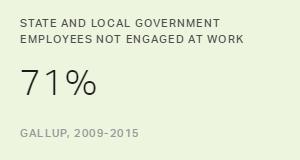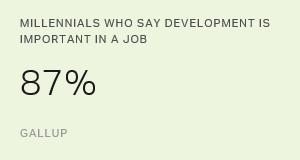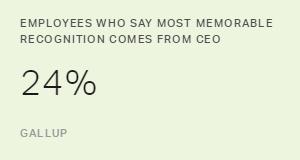One of the biggest opportunities that state and local government leaders have is to invest in the engagement of their employees. In fact, they can't afford not to.
Employee disengagement costs the U.S. economy roughly half a trillion dollars a year. Local governments' annual budgets from Lincoln, Nebraska, to New York City total about $2.0 trillion, while state governments annually spend an estimated $1.7 trillion. Combined, state and local governments contribute 11% to U.S. GDP*. Considering the size of their workforce and budgets, disengagement is costing state and local governments, conservatively, up to $100 billion -- more than the entire spending budgets of most states.
Gallup data show 29% of full-time state and local government employees are engaged at work. This includes police officers, firefighters, teachers, and city and state government officials. These engaged workers drive innovation and move their workplaces forward. The problem is that 71% of state and local government employees aren't in jobs like this.
There are pockets of excellence. In Mississippi, engaged state and local government workers outnumber actively disengaged workers by nearly 3-to-1. On the other hand, New York and Illinois have about one actively disengaged employee to every one engaged employee. But all three merit further study to better understand what makes a great workforce that delivers on the state and local government's mission.
Gallup's new State of Local and State Government Workers' Engagement report shows current employee engagement and disengagement figures for the state and local governments in 43 states. The findings illustrate the need for these governments to find strategies to help curb disengagement. Leaders have the chance to more effectively help government employees understand how they fit into the government's mission, and what they can do to help the government achieve that mission faster.
*Government spending is not identical to its GDP contribution.




